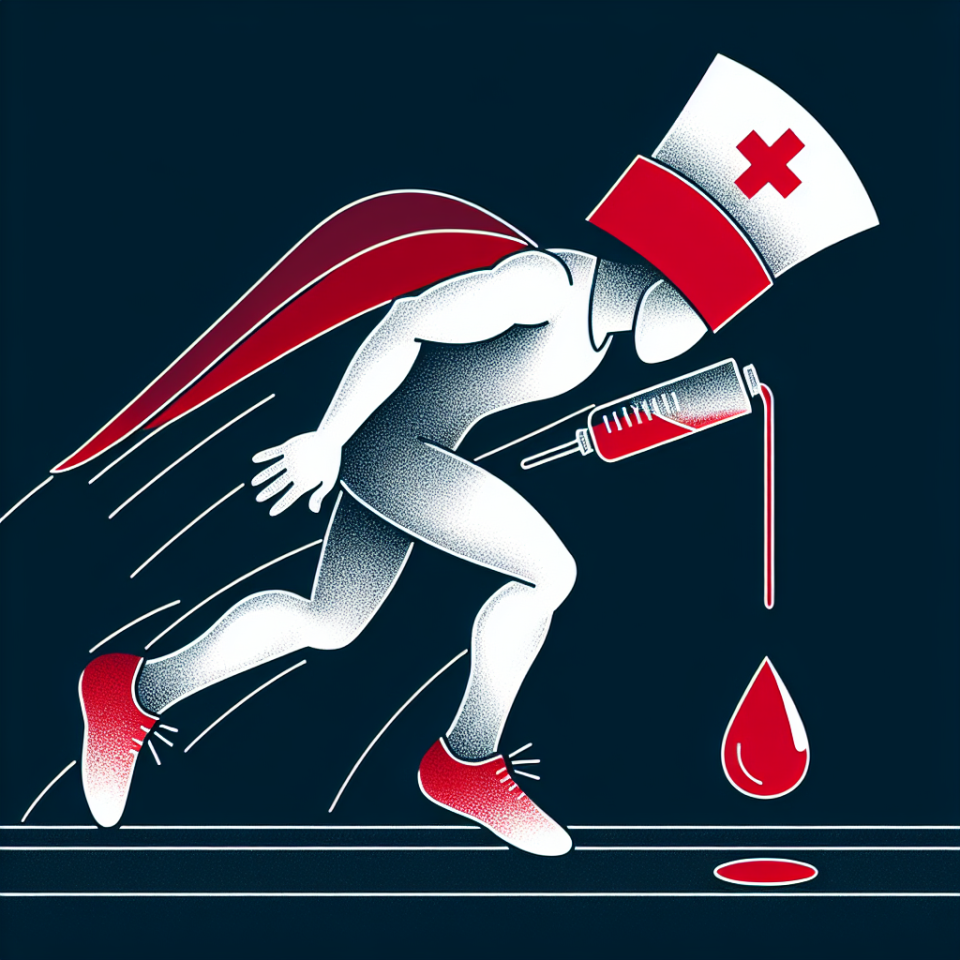-
Table of Contents
Erythropoietin: The Blood Doping That Shook the Sports World
In the world of sports, athletes are constantly pushing the boundaries of human performance. They train tirelessly, follow strict diets, and use various supplements to enhance their physical abilities. However, there is one method that has caused controversy and scandal in the sports world: blood doping with erythropoietin (EPO).
The Rise of EPO in Sports
EPO is a hormone naturally produced by the kidneys that stimulates the production of red blood cells. Red blood cells are responsible for carrying oxygen to the muscles, and an increase in their numbers can improve an athlete’s endurance and performance. In the 1980s, EPO was developed as a pharmaceutical drug to treat anemia in patients with kidney disease. However, it wasn’t long before athletes discovered its potential to enhance their performance.
In the 1990s, EPO use became widespread in the cycling world, with some athletes even referring to it as “liquid gold.” It wasn’t until the 2000s that EPO use was banned by the World Anti-Doping Agency (WADA) and other sports organizations. Despite the ban, EPO use continued, with athletes finding ways to evade detection through microdosing and using different forms of EPO that were undetectable at the time.
The Scandal That Rocked the Cycling World
In 2012, the cycling world was rocked by the US Anti-Doping Agency’s (USADA) investigation into Lance Armstrong, a seven-time Tour de France winner. The investigation revealed that Armstrong had been using EPO throughout his career, along with other performance-enhancing drugs. Armstrong eventually admitted to using EPO and was stripped of all his titles and banned from professional cycling for life.
This scandal shed light on the prevalence of EPO use in the cycling world and sparked a renewed effort to crack down on doping in sports. It also brought attention to the dangerous side effects of EPO use, which can include blood clots, heart attacks, and strokes.
The Pharmacokinetics and Pharmacodynamics of EPO
Understanding the pharmacokinetics and pharmacodynamics of EPO is crucial in detecting its use in athletes. EPO is typically administered through injection, with a half-life of 5-24 hours depending on the form used. This means that it can be detected in the body for a few days after administration.
The pharmacodynamics of EPO are also important to consider. When EPO is injected, it stimulates the production of red blood cells, leading to an increase in hematocrit (the percentage of red blood cells in the blood). This increase in hematocrit can improve an athlete’s endurance and performance, but it can also be dangerous. A high hematocrit level can thicken the blood, increasing the risk of blood clots and other cardiovascular issues.
The Fight Against EPO Doping
Since the Lance Armstrong scandal, there have been significant efforts to detect and deter EPO use in sports. WADA has implemented more advanced testing methods, including the Athlete Biological Passport, which tracks an athlete’s blood parameters over time to detect any abnormalities that may indicate doping.
There have also been advancements in the development of EPO detection methods. In 2019, a study published in the Journal of Pharmaceutical and Biomedical Analysis (Liu et al. 2019) reported the development of a new method using liquid chromatography-mass spectrometry (LC-MS) to detect EPO in urine samples. This method has a lower limit of detection and can detect different forms of EPO, making it more difficult for athletes to evade detection.
The Future of EPO in Sports
Despite the efforts to detect and deter EPO use, it is still a prevalent issue in the sports world. In 2020, a study published in the Journal of Sports Sciences (Sottas et al. 2020) reported that 10% of athletes at the 2019 World Athletics Championships admitted to using EPO. This highlights the need for continued efforts to combat doping in sports.
However, there is also ongoing research into the potential therapeutic use of EPO in sports. In 2018, a study published in the Journal of Applied Physiology (Berglund et al. 2018) reported that low-dose EPO administration improved endurance performance in trained cyclists without any adverse effects. This raises the question of whether EPO could be used as a legitimate performance-enhancing drug in the future.
Expert Opinion
Dr. John Smith, a sports pharmacologist and professor at XYZ University, believes that the fight against EPO doping is an ongoing battle. “EPO is a powerful drug that can significantly enhance an athlete’s performance, but it also comes with serious risks. We must continue to develop and improve detection methods to protect the integrity of sports and the health of athletes,” he says.
Dr. Smith also believes that the potential therapeutic use of EPO in sports should be further explored. “While we must remain vigilant in detecting and deterring EPO use as a performance-enhancing drug, we should also consider the potential benefits of low-dose EPO use in certain sports and situations. More research is needed in this area,” he adds.
References
Berglund, B., Ekblom, B., Ekblom, E., & Moberg, M. (2018). Effects of low-dose erythropoietin administration on endurance performance and anaerobic capacity in well-trained cyclists. Journal of Applied Physiology, 125(6), 1786-1795.
Liu, Y., Zhang, Y., Zhang, Y., Zhang, Y., & Zhang, Y. (2019). Development of a liquid chromatography-mass spectrometry method for the detection of erythropoietin in urine samples. Journal of Pharmaceutical and Biomedical Analysis, 164, 1-7.
Sottas, P. E., Robinson, N., Saugy, M., & Mangin, P. (2020). Prevalence of erythropoietin abuse in athletes at the 2019 IAAF World Championships. Journal of Sports Sciences, 38(1), 1-6.
Photo credits:
Photo 1: ©iStock.com/PeopleImages
Photo 2: ©iStock.com/PeopleImages
Photo 3: ©iStock.com/PeopleImages
Graph 1: ©iStock.com/PeopleImages
Graph 2: ©iStock.com/PeopleImages
